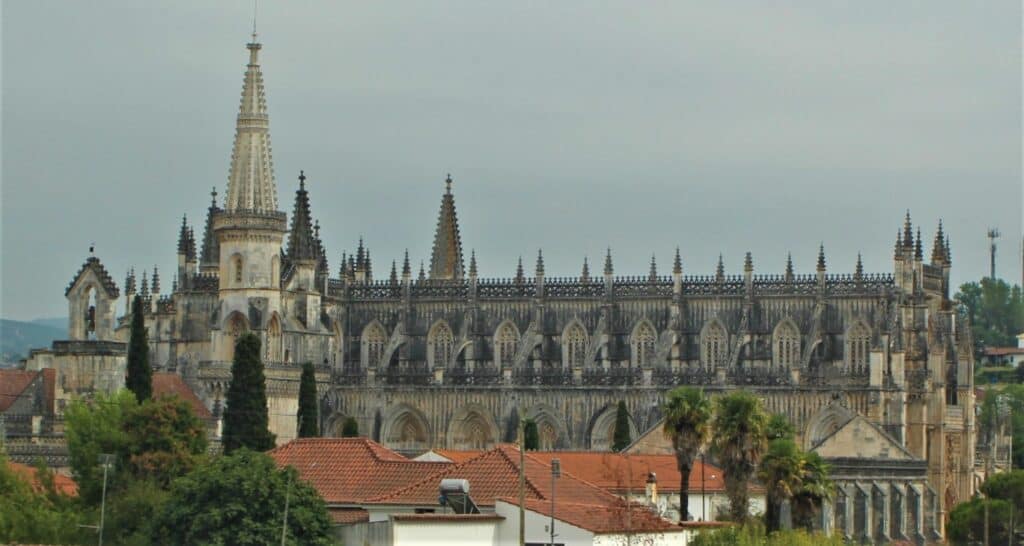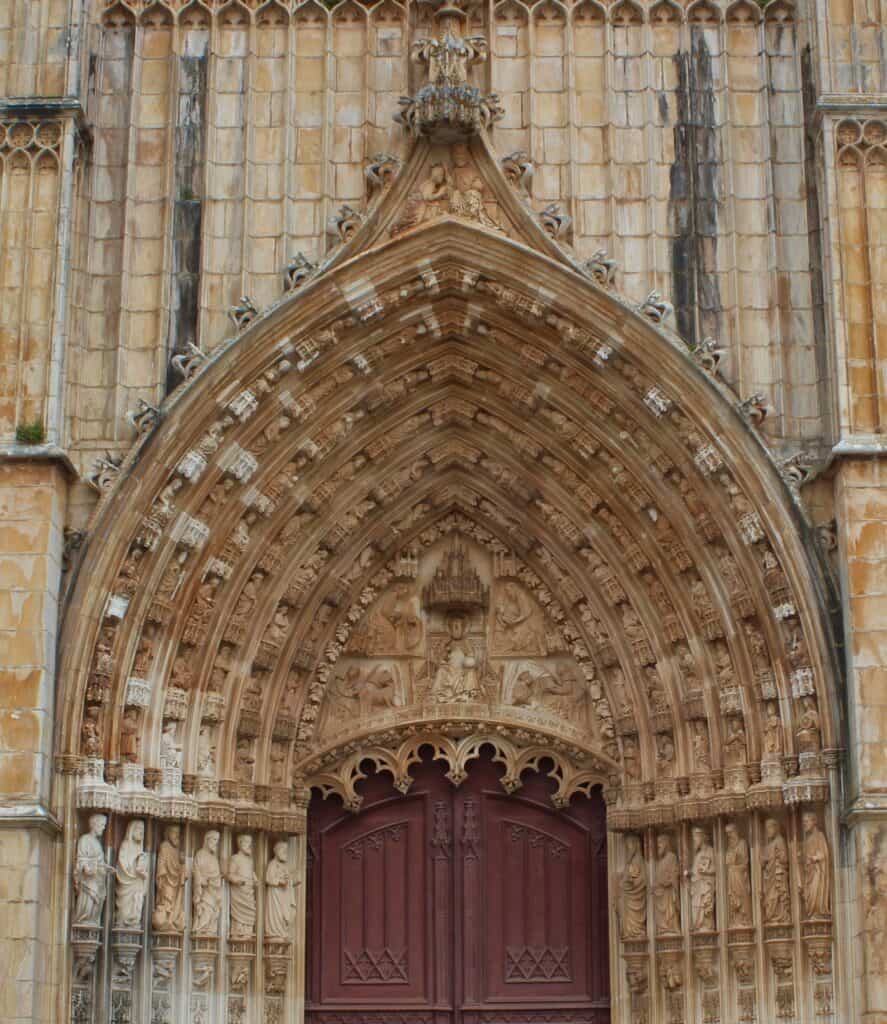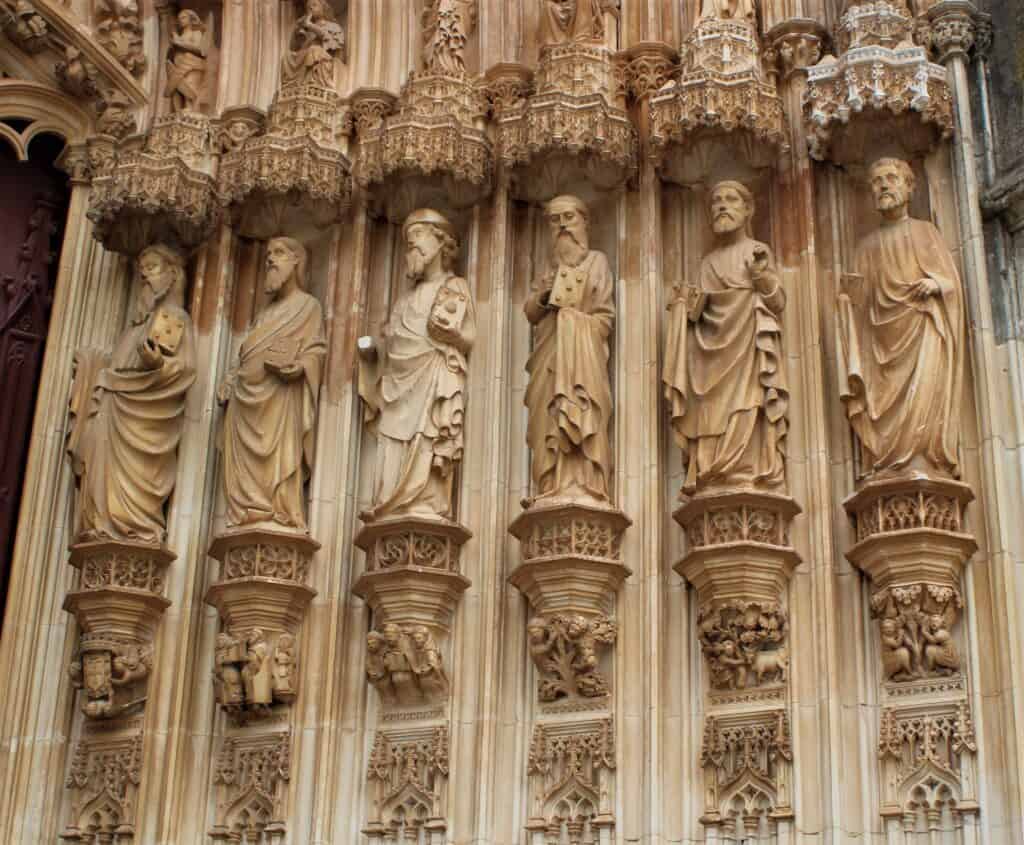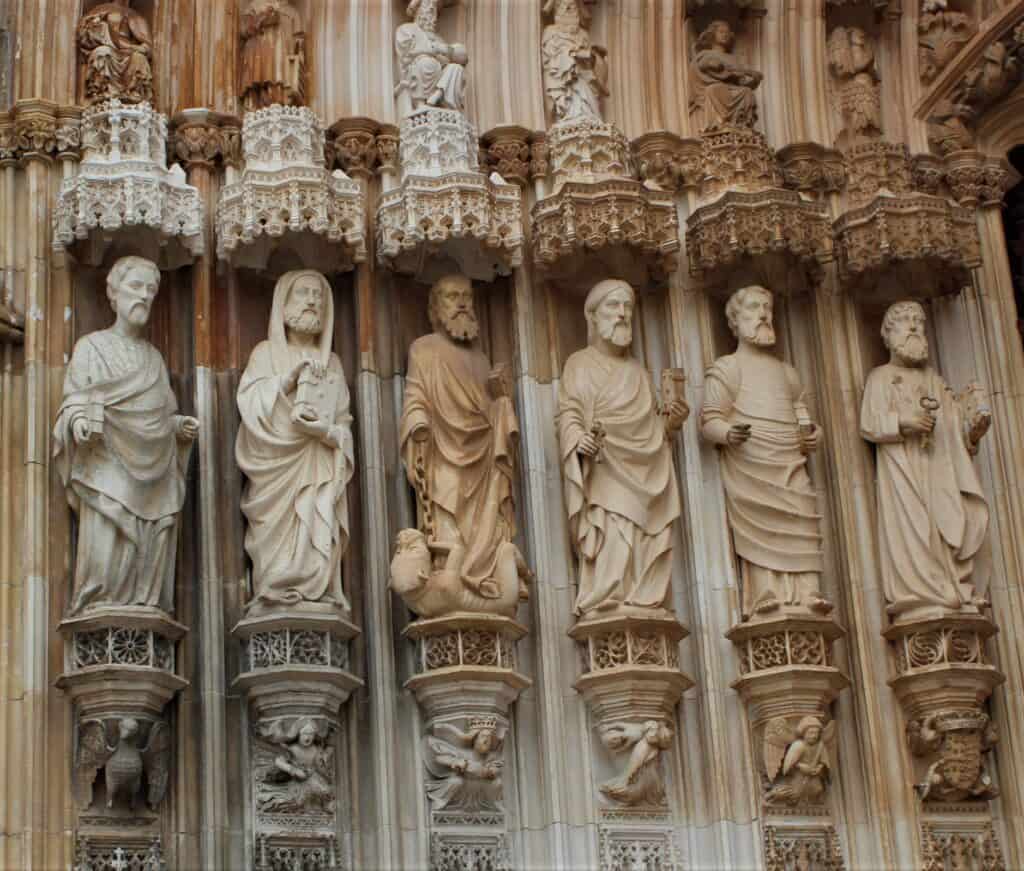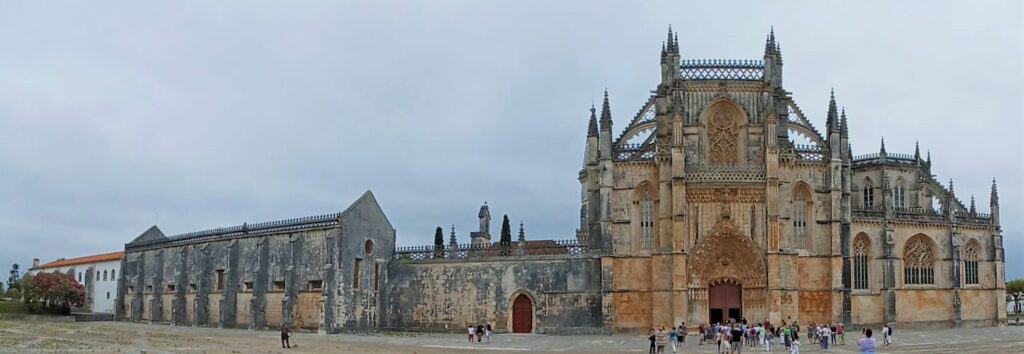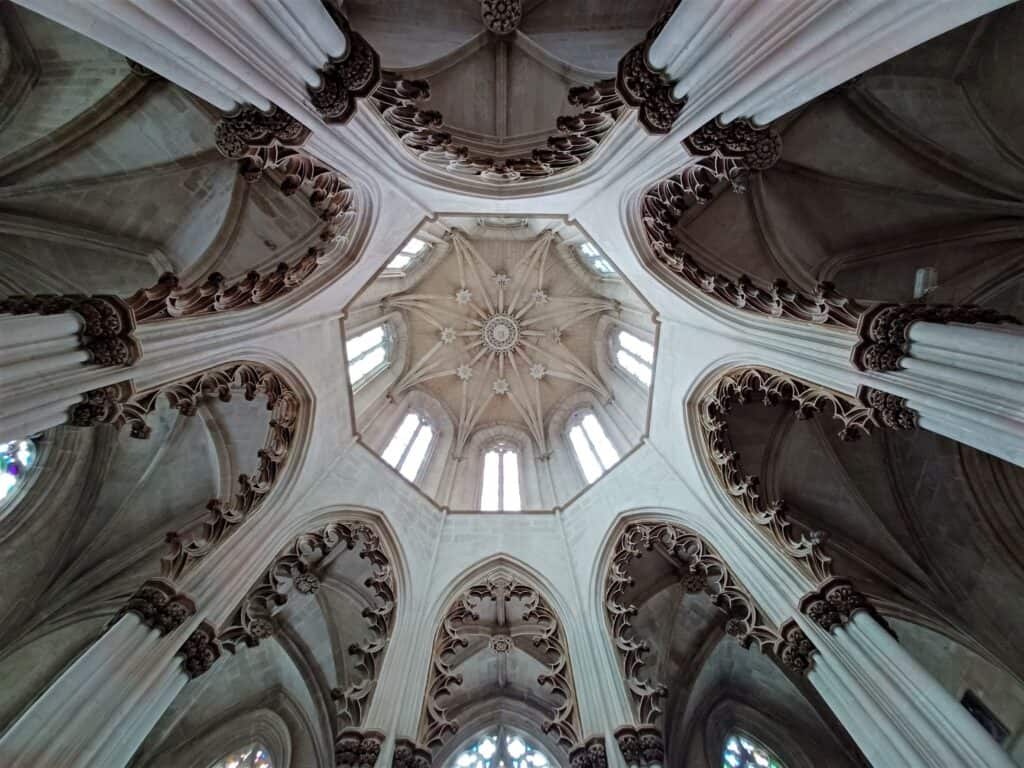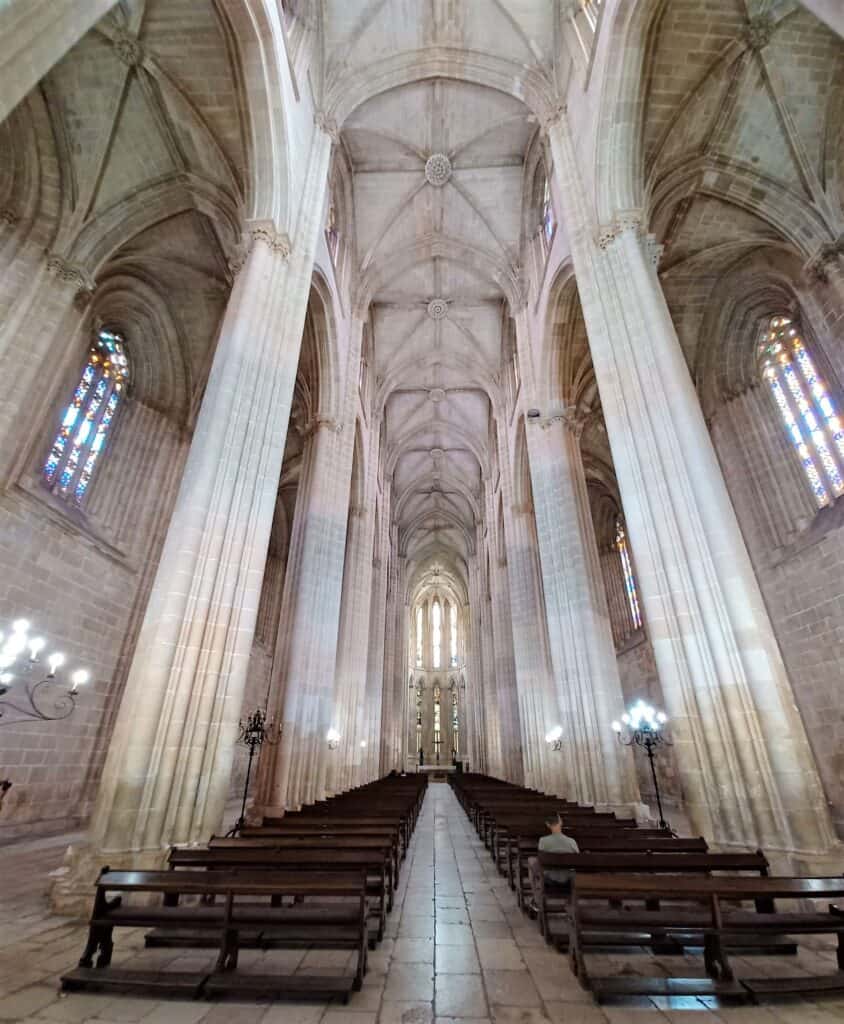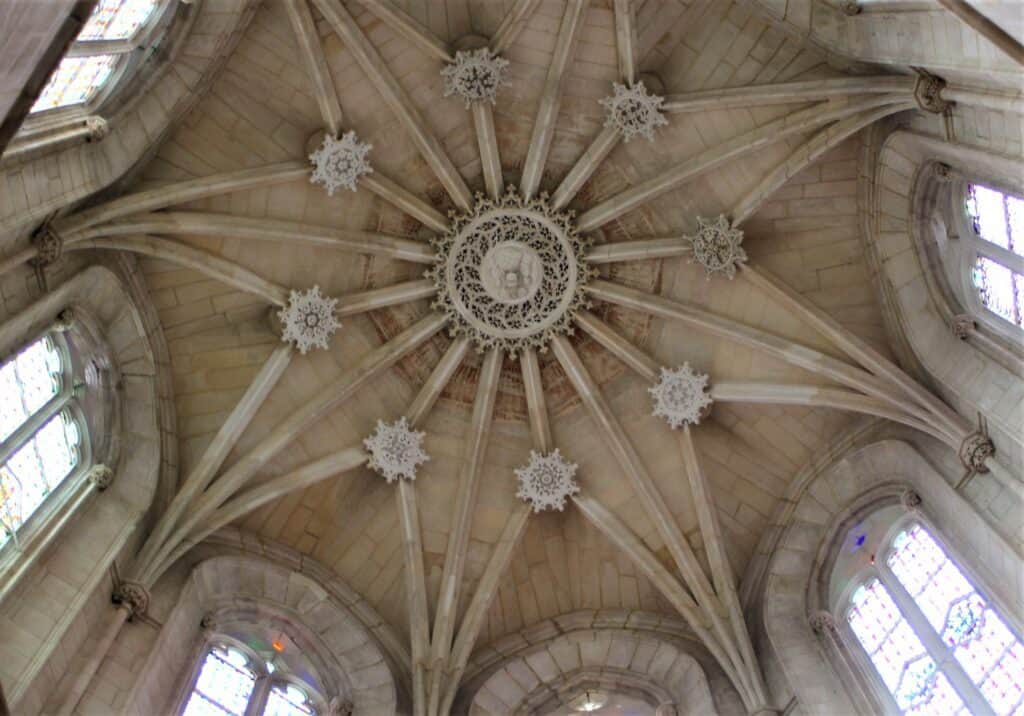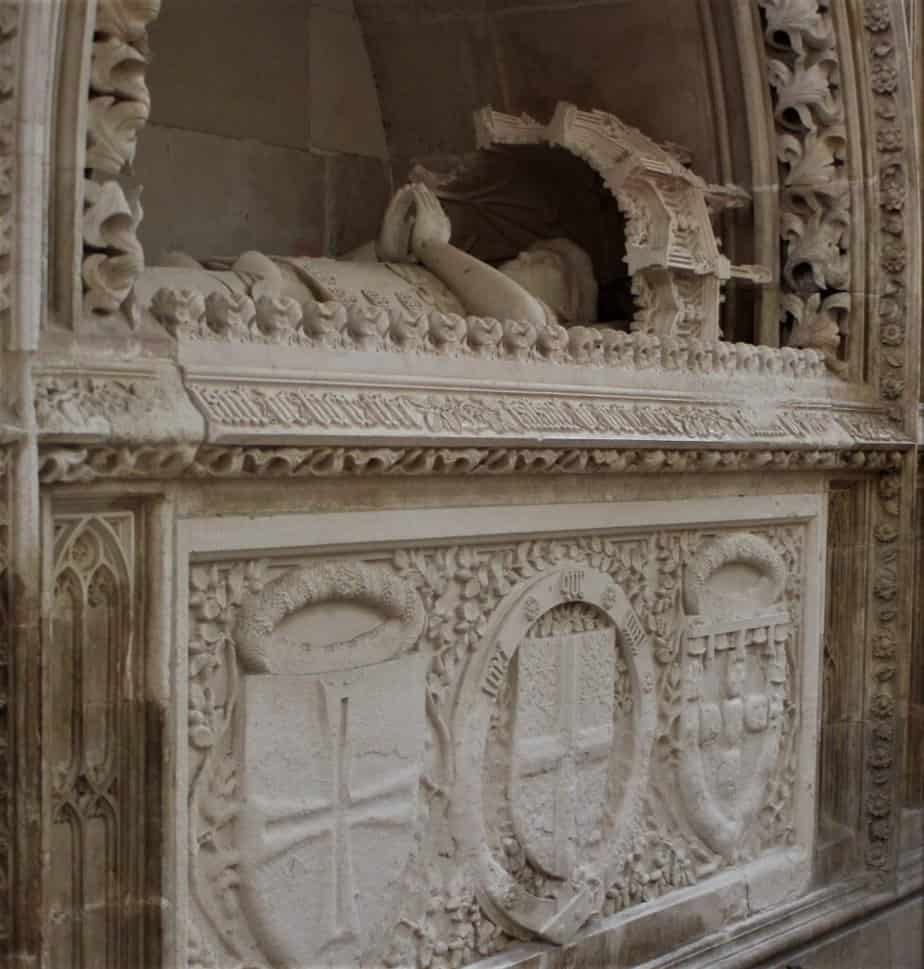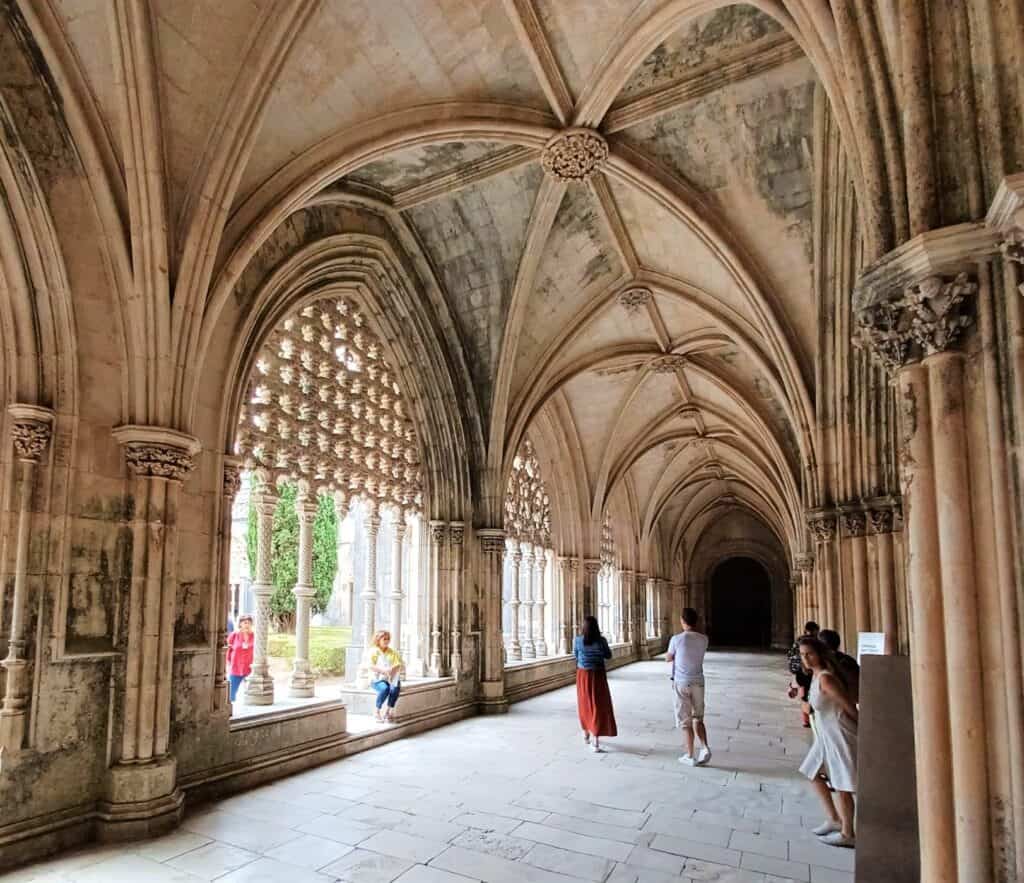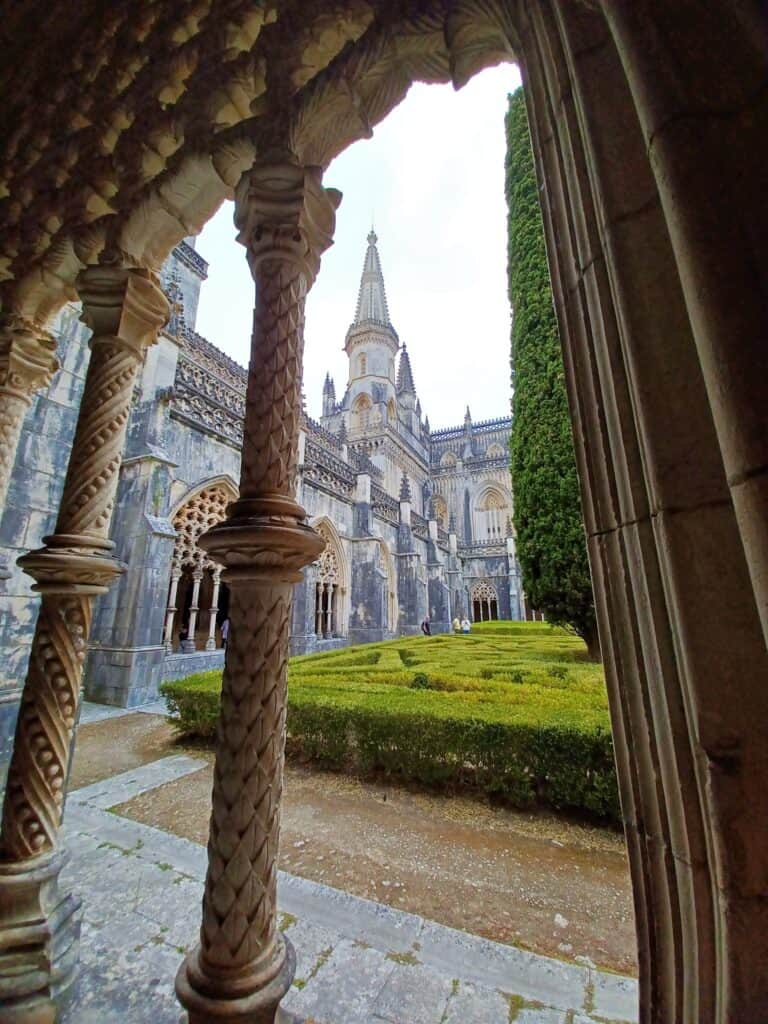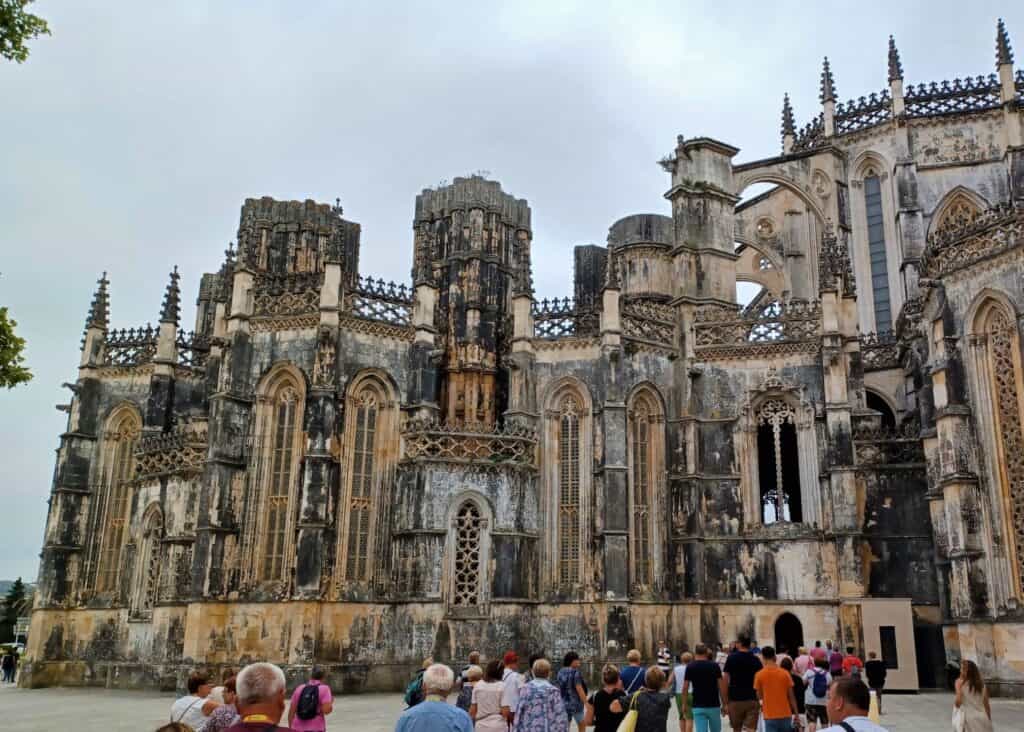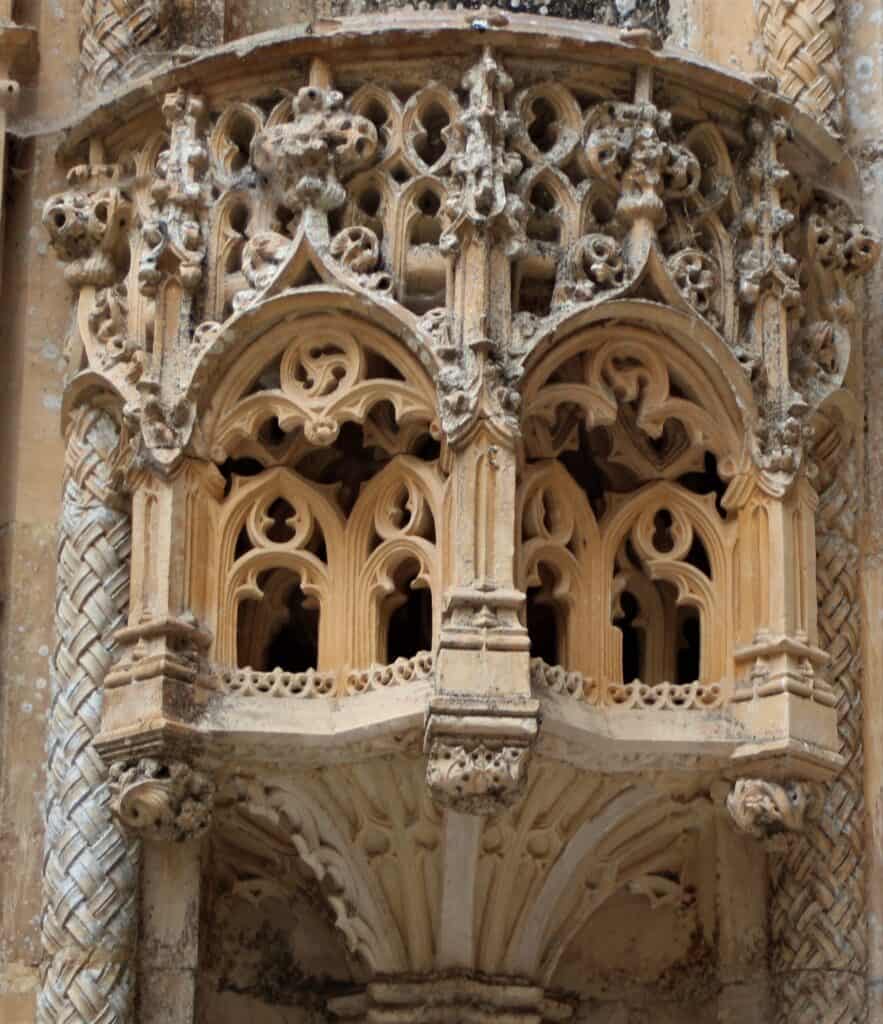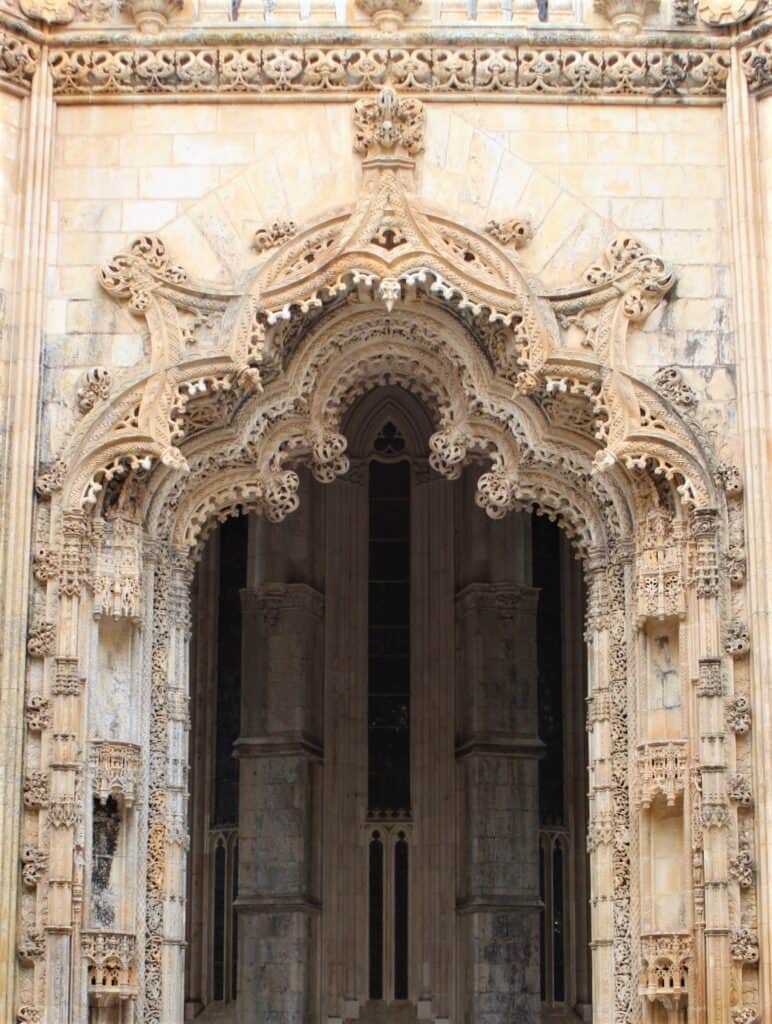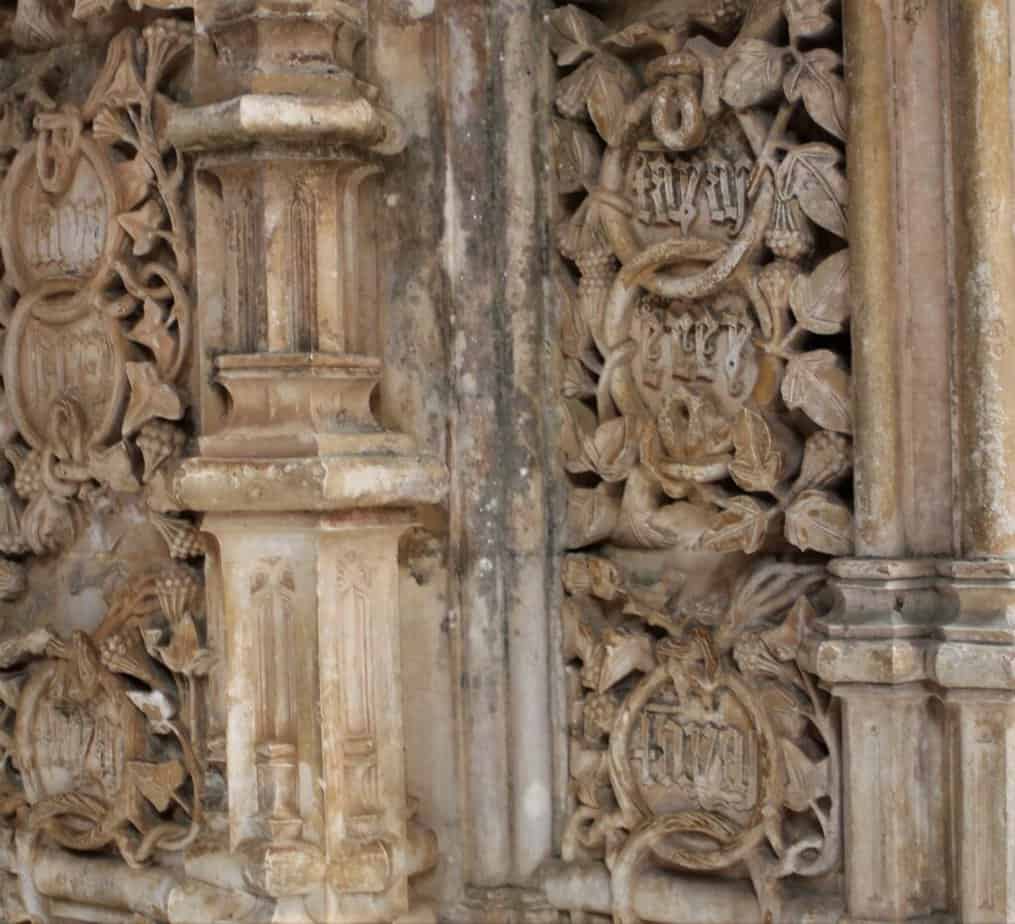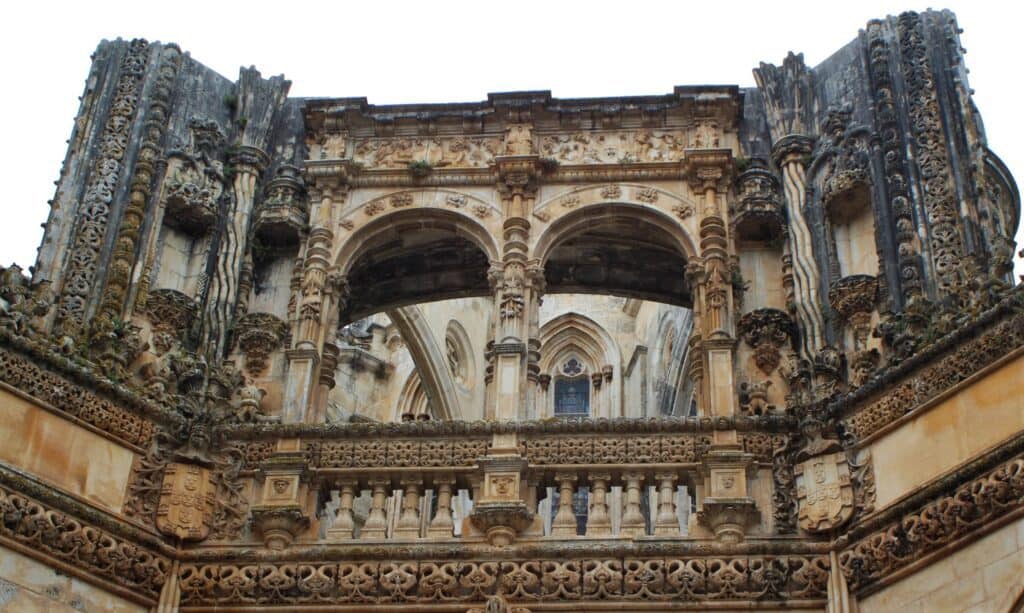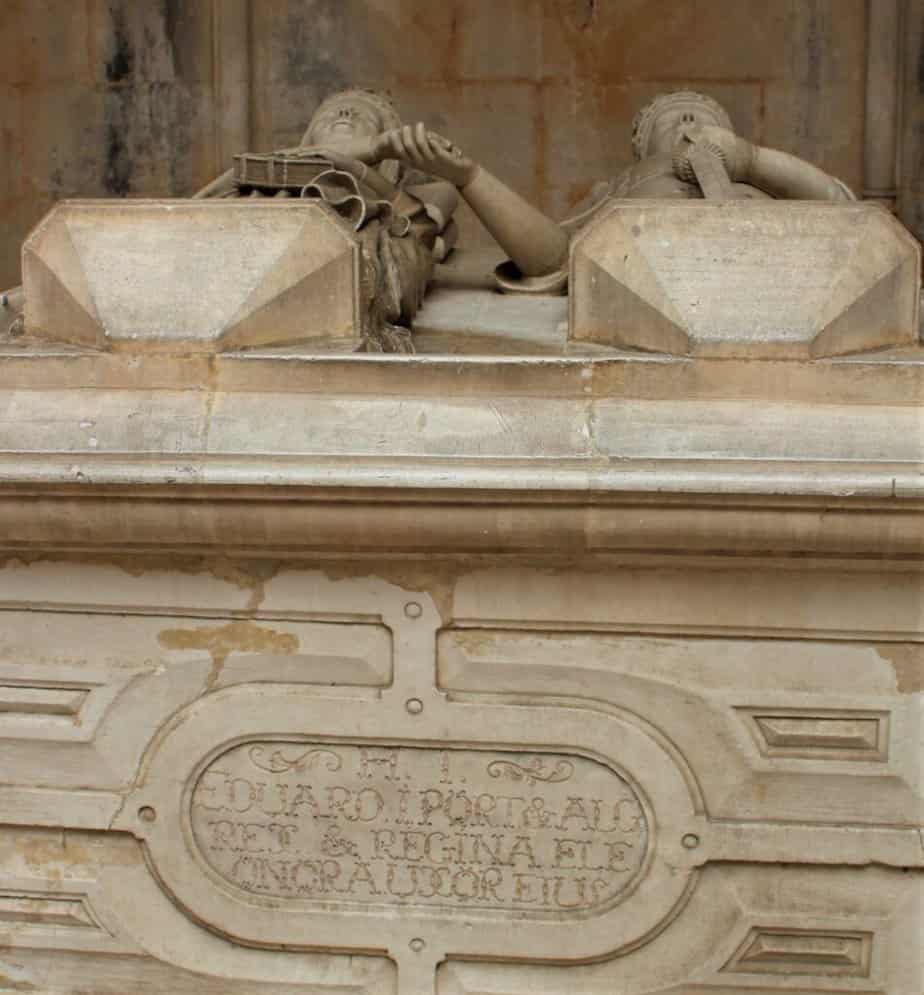Though small, Batalha has a fascinating history and its own signature pastry to sample.
A Short History
Before the arrival of the Romans in the Iberian Peninsula, the area around present day Batalha was occupied by the Turduli people. Later, when the Romans arrived, they called the city Collipo.
But, the city became famous after the Portuguese victory over the Spanish in the Battle of Aljubarrota on August 14th, 1385. After that, King João I (King John I) ascended to the throne and fulfilled his promise to build a fanciful church to thank the Virgin Mary for the Portuguese victory.

João’s victory over the Spanish was part of proxy war in the Hundred Years’ War between the British and French. The English took the side of the Portuguese while the French and Italians assisted the Spanish. Regardless of any help he might have received from the English, João’s military acumen routed the Spanish who greatly outnumbered the Portuguese.
As a result, Portugal gained independence which it has not surrendered since (though Napoleon did invade the country in 1807) and King João I is revered as a national hero.
Foodie Batalha
Pudim da Batalha
Pudim translates to pudding in English, but this tart is far from what we would know as pudding in the U.S. Instead, it is a moist cake-like tart made with eggs, almonds, and cinnamon. I’ve read some stories comparing Pudim da Batalha to cheesecake, but I find it much more like a rich almond cake.

Surprisingly, the Pudim da Batalha was created not in Batalha, but Aveiro, a town over 80 miles from Batalha, by a lady in the 1920’s. Her original recipe is still used to make Pudim da Batalha at Pastelaria Oliveira. You can also get a very nice Pudim da Batalha at A Padaria da Batalha. Both places are just steps from the monastery.
Brisa do Lis
The Brisa do Lis (also called the Brisa do Liz) is a famous pastry from the nearby town of Leiria, about 7 miles from Batalha. The treat is made with egg yolks, almonds, and sugar. The recipe originated, like many pastry recipes do in Portugal, in a local convent. In fact, the tart was originally Brisas de Santa Ana, named for the convent where the treat was invented.
At one point, a nun shared the secret recipe with a parishioner who then told it to a friend who, in turn, shared it with with a local cafe. That cafe, the Colonial, churned out Brisa do Lis for decades before closing in 2013.
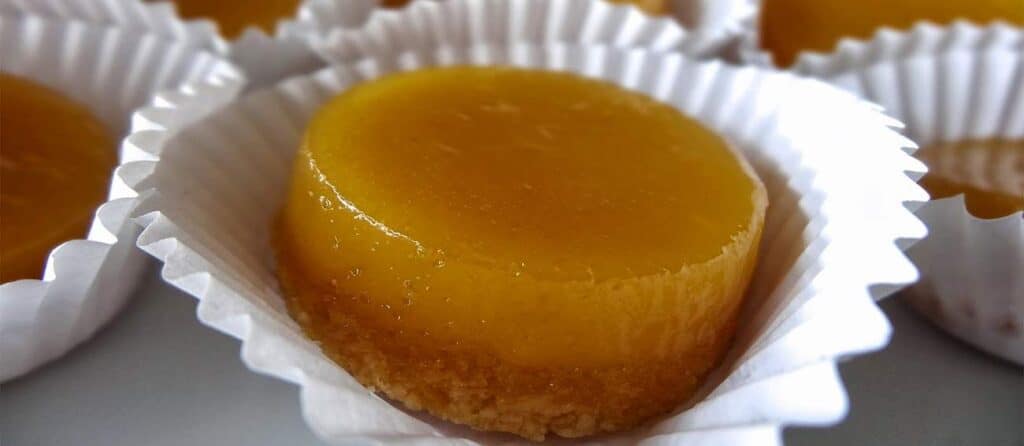
There are tons of places to get a Brisa do Lis in Leiria, but in Batalha they’re a little harder to get. Pires Pastelaria has a few locations in Leiria, but they’ve also got an outpost in Batalha, about 1.5 miles from the monastery. That’s the place to go in Batalha for a Brisa do Lis if you can’t make it to Leiria.
Vegetarian Batalha
Batalha is a small town so there’s not a ton of choices. However, there’s one place I can give a hearty recommendation. Ice Crepe is a little cafe on the square next to the monastery. They have several veg. and vegan options. Their crepes are divine, but really, everything I’ve ever had there is excellent. That’s because the owners really care about serving fresh ingredients.
I had a fruit bowl at Ice Crepe recently. It’s simple, really, but I can’t tell you how many times I’ve had a fruit bowl with under ripe of overripe mushy fruit. Yuck! The fruit at Ice Crepe was fresh and sweet and delicious.
They also have local wine on the menu. The prices are more than reasonable and the service is excellent because the owner is a delight. Highly recommended!
Drinking in Batalha
Batalha Wines
Batalha is part of the Encostas d’Aire subregion of the larger Lisbon wine region. Encostas d’Aire is a DOC wine region, the top classification for quality in Portuguese wines.
In 1959 a group of wine grape growers formed a cooperative to increase the quality (as well as the price) of local wine. Over the years, the Adega Cooperativa Da Batalha has expanded membership as well as the land dedicated to grape growing. Today, over 1,200 acres are under cultivation and the quality of the wine is outstanding.

Adega Cooperativa Da Batalha has a store with all their wines on offer. The store is only a 5 minute walk from the monastery. Or, stop by Ice Crepe, they have some local Batalha wines on their menu.
The monastery also has a wine shop.
Things to do in Batalha
Batalha is a small town. You could spend a half day seeing all these sights and getting a meal. Then, get on the bus and two hours later you’re in Lisbon in time for dinner.
Batalha Monastery
In 1383, King Ferdinand I of Portugal died without a male heir. This resulted in the 1383–1385 Portuguese interregnum or Crisis of 1383-1385. Ultimately, Ferdinand’s half-brother João’s assembled army won military victories including the Battle of Aljubarrota in 1385 and secured the throne.
As King Joã had promised, construction began on the Mosteiro de Santa Maria da Vitória (Monastery of Saint Mary of the Victory), commonly known as the Batalha Monastery, in 1386. Since the Monastery was worked on until 1517 it features several different architectural styles, though most can be called Late Gothic, including Manueline.
In 1501, work began on the famous Jerónimos Monastery in Lisbon. As the focus (and money) was on the new monastery, construction eventually stopped at the Batalha Monastery in 1517 leaving one of the chapels unfinished.

Visiting the Batalha Monastery
The exterior of the Monastery is extraordinary. If you’ve been to York, England, you might notice a similarity between the cathedral there and Batalha Monastery. Spend some time walking around the entire structure. You’ll see fancy spires, gargoyles, intricate window coverings, and a spectacular entrance decorated with statues of saints.
Entering the main cathedral is free. The nave has a soaring canopy of support arches. The stained glass windows are 500 years old, some even older than that.
To get into the rest of the monastery you’ll need to buy a ticket.
The Founder’s Chapel entrance is just off the nave near the entrance to the monastery. It was built between 1426 and 1434. In the center of the chapel is the tomb of national hero King João I and his wife Queen Philippa of Lancaster (who was actually born into the English royal family). On the far wall are the tombs of João’s four youngest sons and their spouses (if they were married). One of João’s sons interred here is Dom Henrique, better known as Prince Henry the Navigator, one of the most important figures in Portugal’s Age of Discoveries.
On the opposite wall of the Founder’s Chapel is a reproduction of the Painéis de São Vicente de Fora (Saint Vincent Panels). The original artwork from the mid 15th century is currently housed in the Museu Nacional de Arte Antiga (National Museum of Antique Art), in Lisbon.
After visiting the Founder’s Chapel, make your way to the Monastery’s cloister. The supporting columns are decorated with flowers, pearls, and vegetation representing the places visited (and in many cases plundered with its people enslaved) by Portuguese explorers.
The Chapterhouse lies off one of the cloister’s sides. Since the monastery was built to commemorate a military victory, it is appropriate that here is where the tombs of two unknown soldiers from WWI are interred. Two sentinels solemnly stand guard. If you’re lucky, you’ll see the changing of the guard ceremony.
Perhaps the most striking feature of the Batalha Monastery is the unfinished chapel. When royal attention shifted to the building of the even more magnificent Jerónimos Monastery in Lisbon, construction slowed in Batalha, finally ending in 1517, leaving this magnificent chapel unfinished and without a roof.
Seeing the intricate stone work and detail by master craftspeople leaves one thinking about what could have been.
Igreja Matriz da Batalha
Right across the street from the Batalha Monastery is the Igreja Matriz da Batalha (Church of the Exaltation of Santa Cruz). It’s much, much smaller than the monastery (almost any church would be) but is interesting because it was built in the Portuguese Manueline style. You can especially see the distinctive Manueline architecture in the fanciful door of the church.
The church was completed in 1532 but had to be partially rebuilt after an earthquake in 1858 collapsed the roof and destroyed part of the bell tower.
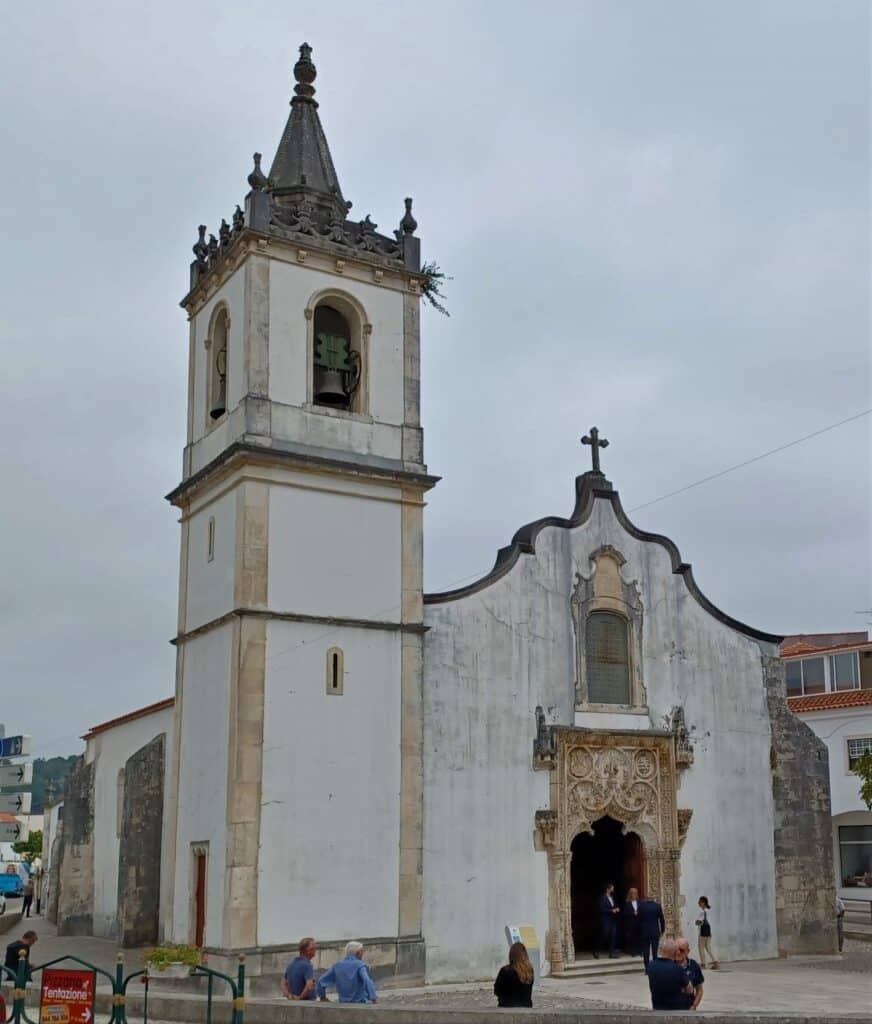
Batalha Capela de Nossa Senhora do Caminho
Back in the day, there was a fence around the Batalha Monastery. Legend has it that a Friar saw an image of the Virgin Mary in the fence, so this tiny chapel was built. Not much is known about when it was built although the design suggests it was sometime in the mid 18th century.
Regardless, the chapel is tiny and charming, though it is often locked up tight. But, you can peek inside the window. Best of all, the chapel is right across the street from A Padaria da Batalha where you can get a delicious Pudim da Batalha.

Local Products
Around the monastery are several small shops selling Portuguese handicrafts like textiles and items made of cork. This is the place to get a souvenir of your trip to Batalha. One of my favorites is Casa Trovao where you can find a nice selection of pottery, tiles, and cork products. Another nice shop is Casa Barros for inexpensive textiles. Get your tea towel with an embroidered rooster (the symbol of Portugal) here.
Battle of Aljubarrota
You can visit the actual site of the Battle of Aljubarrota where in 1385 João led the Portuguese army (with some help from the English) and defeated the much larger Spanish forces. This victory cemented Portuguese identity and elevated João to King of Portugal.
On the site of the battle is an interpretive museum with a short film (in Portuguese) explaining the battle and it’s importance. They’re also planted flora to replicate the environment of the 14th century battlefield.
On a rise at a strategic point, a small chapel was built, the Capilla de San Jorge (Capela de São Jorge).
Daytrips
Lisbon
You’ll likely be taking a daytrip from Lisbon to Batalha. We have a detailed Foodie Travel Guide to Lisbon.
Grutas de Mira de Aire
The largest cave in Portugal stretches for 11 kilometers. Descend 120 meters over 600 meters and view a portion of it.
Tomar
City known for its sites associated with the Knights Templar including the Church of Santa Maria do Olival where many knights are buried. Also home to Castle and Convent of the Order of Christ, a UNESCO World Heritage Site, and a beautiful 15th century Synagogue.
Nazare
Haven for surfers where some of the largest waves in the world have been recorded and ridden by the fearless waveriders.
Fatima
A city for Christian pilgrims to visit the site where shepherd children supposedly witnessed Marian apparitions in 1917. A huge basilica has been built on the site.
Transportation
Batalha is a small town (population is less than 10,000 people) and has no airport, a train station or even local public transportation. If you’re coming from Lisbon, a bus leaves from the Sete Rios station and takes about 2 hours to get to Batalha. From there it’s just a 5 minute walk to the monastery. Uber and Bolt is available for ride sharing, but it often takes a while to get a car to pick you up.
Index of Things to do in Batalha
Batalha Monastery
Magnificent monastery built to commemorate a Portuguese victory over the Spanish in 1385.
Largo Infante Dom Henrique, 2440-109 Batalha, Portugal
Igreja Matriz da Batalha
Church with an interesting Manueline portal.
Estr. de Fátima 10A, Batalha, Portugal
Batalha Capela de Nossa Senhora do Caminho
Tiny chapel near the monastery.
R. Nossa Sra. do Caminho 26A, 2440-081 Batalha, Portugal
Museu da Comunidade Concelhia da Batalha
Museum of local history with some fossils dating back 250 million years as well as stone and iron age artifacts to more recent items.
Largo Goa, Damão e Diu 4, 2440-901 Batalha, Portugal
Ponte da Boutaca
Neo-gothic 19th century viaduct
Estr. da Boutaca 68, Batalha, Portugal
Centro de Interpretación de la Batalla de Aljubarrota (Fundação Batalha de Aljubarrota)
Museum at the site of the 1385 battle with the Spanish.
Av. Dom, Av. Nuno Álvares Pereira 120, 2480-062 Porto de Mós, Portugal
Capela de São Jorge
Small chapel near the battlefield.
Index of Places to Eat & Drink in Batalha
Ice Crepe
Lovely cafe on the square near the monastery. Several good veg. options and local Batalha wine.
Praça Dom João I 4, 2440-108 Batalha, Portugal
Pastelaria Oliveira
Original place for a Pudim da Batalha.
Praça Dom João I 9, 2440-108 Batalha, Portugal
A Padaria da Batalha
Nice coffee shop with Pudim da Batalha, too.
R. Nossa Sra. do Caminho 26, 2440-081 Batalha, Portugal
Pires Pastelaria
The place in Batalha for a Brisa do Lis.
Shopping, 2440-462 Batalha, Portugal
Index of Shopping in Batalha
Adega Cooperativa Da Batalha
Wine shop of the Batalha winemakers cooperative.
Estr. de Fátima 9, Batalha, Portugal
Real Garrafeira
Wine shop in the monastery.
R. Nossa Sra. do Caminho 10 C, 2440-081 Batalha, Portugal
Casa Trovao
Nice selection of pottery, tiles, and cork products.
R. Nossa Sra. do Caminho, 2440-121 Batalha, Portugal
Casa Barros
Good place for inexpensive and nicely embroidered textiles.
R. dos Dominicanos 2A, 2440-131 Batalha, Portugal
Index of Places to Stay in Batalha
Mosteiro View
Steps from the monastery.
Praça de Mouzinho Albuquerque 5, 2440-109 Batalha, Portugal
About the Author

Brent Petersen is the Editor-in-Chief of Destination Eat Drink. He currently resides in Setubal, Portugal. Brent has written the novel “Truffle Hunt” (Eckhartz Press) and the short story collection “That Bird.” He’s also written dozens of foodie travel guides to cities around the world on Destination Eat Drink, including in-depth eating and drinking guides to Lisbon, Porto, and Monsaraz. Brent’s podcast, also called Destination Eat Drink, is available on all major podcasting platforms and is distributed by the Radio Misfits Podcast Network.

